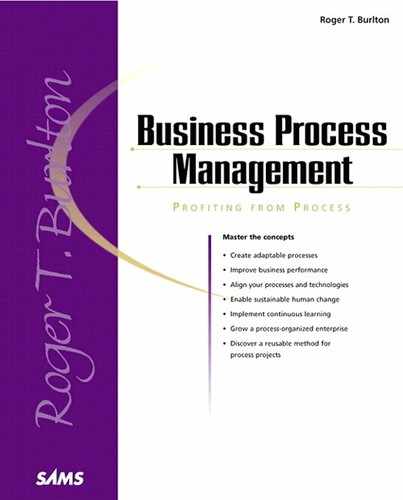Developing/Integrating Technology and Systems
This step levers the process vision and process design into a set of systems solutions that will enable improved performance and support the new job definitions. In this step, the organization develops these solutions based on the models and prototypes developed in the prior phases; this accelerates the systems development process and reduces systems development time and business risk. Managers will incrementally release versions of the systems solution, keeping in mind the need to provide maneuverable solutions.
Techniques
Use the following techniques to develop and integrate the new technologies and systems:
Systems requirements modeling
Prototyping/rapid application development
Workshop management
Project management
Quality assurance
Lessons Learned
This step is part of a larger Information Technology program.
The process models developed in the Renew phase and further expanded in the “Develop processes, procedures, and rules” step should be used as the basis for applications to be developed. Each model will outline the rules of off-the-shelf software solutions to be acquired. The needed transformation from inputs to outputs and the content of the guides will define the enablers’ roles. Also, the role and job descriptions will help define staff technology requirements.
The scenarios developed earlier to validate the process designs should also be used to check dialog flows, script development, and user testing of technology support. They should also be used to evaluate software vendors’ packages applications for suitability toward the whole process under all situations.
Use evolutionary prototyping and rapid application development to build applications. There will be pressure to deliver something fast and to see it evolving. Maintain high user involvement as was the case for the iterative process design.
The prototypes used to validate the process/people/technology interface should be the basis for the development of application prototypes. Iterate through the prototypes to final validation of user requirements and evolve them rapidly into robust applications suitable for production purposes.
Iterate using time-box techniques; schedule reviews and feedback sessions well in advance. Never delay a session to validate what has been developed so far. Instead, prioritize the work, and show what has been done to date.
Develop data models in detail with full attribution if this was not done in the Renew phase. Data models can be evolved iteratively along with the prototypes.
All models developed earlier will undergo a transformation from conceptual business-oriented models to physical application system or object models, specifying precisely what the system must do in the prototype and final solution.
Don’t ignore the documentation or later support requirements.
The applications must be designed to change easily as the business changes. Design for flexibility. Use techniques that allow for changes without changing a lot of code or data designs, such as business rule separation from program logic.
